Looking for a new Smart TV in Singapore? Check out our Xiaomi vs Prism+ TV comparison to see which one suits you best.
Ever since the launch of Prism+ TVs, the brand has grown a lot in popularity. Xiaomi is one of the biggest budget TV brands in Asia and has a few TVs that directly go up against Prism+’s TVs. The competition has been fierce between the Mi 5X TV and Prism+ Q55 Pro QE.

Both products aim to compete by offering the best price-to-performance ratio. They aim to offer the most for the lowest price possible. Both are 4K 55-inch TVs that will undercut brands like Samsung, Sony, and LG.

I am going to compare them both and see which one comes out on top. On paper, both are so evenly matched it feels like a draw. But there has to be a better product between the two and we will find that out soon. At the end of this article, you will be clear on which TV to choose.
Related: Xiaomi vs Samsung TV
Xiaomi vs Prism+ TV 2023
If you want the Xiaomi TV experience
Check it out here on Aliexpress
Check it out here on Lazada SG
Xiaomi Mi 5X TV vs Prism+ Q55 Pro QE TV
Specifications
| Specification | Xiaomi Mi 5X TV | Prism+ Q55 Pro QE |
|---|---|---|
| Display size | 55 inches | 55 inches |
| Screen type | LED | Quantum IPS |
| Resolution (pixels) | 3840 x 2160 (4K) | 3840 x 2160 (4K) |
| Smart TV | Yes | Yes |
| Operating system | Android TV 10 | Android TV 10 |
| RAM | 2 GB | N/A |
| Storage capacity | 16 GB | N/A |
| Wi-Fi | 802.11a/b/g/n/ac | 2.4GHz/5GHz Bandwidth |
| Bluetooth | N/A | Bluetooth 5.0 |
| Ethernet | 1 | Yes |
| HDMI ports | 3 | 3 HDMI 2.0, HDMI ARC |
| USB ports | 2 | 2 USB 2.0 |
| Headphone jack | Yes | N/A |
| Digital audio output | Yes | Optical audio out |
| Picture engine | Vivid Picture Engine 2 | N/A |
| HDR support | HDR10, HDR10+, Dolby Vision, HLG | HDR10 |
| Audio | Dolby Audio, Dolby Atmos, DTS-HD | Dolby Atmos & DTS TruSurround |
| Speaker output RMS | 40W | 2 x 10W |
| Wall mounting | 300 x 300 mm | 200 x 200 mm |
Mi 5X TV vs Prism+ Q55 Pro QE Display
Both TVs have a 55-inch screen size with a resolution of 3840x2160 and support for 4K. The Xiaomi Mi 5X uses an LED panel, while the Prism+ Q55 Pro QE uses Quantum IPS technology.
Both TVs support HDR, with the Xiaomi Mi 5X supporting HDR10, HDR10+, Dolby Vision, and HLG, and the Prism+ Q55 Pro QE supporting HDR10.


Mi 5X TV vs Prism+ Q55 Pro QE : Performance
The Xiaomi Mi 5X comes with a quad-core A55 CPU, Mali G52 MP2 graphic processor, 2GB of RAM, and 16GB of storage.
The Prism+ Q55 Pro QE also has 2GB of RAM and 16GB of storage, but the exact CPU and GPU are not specified.
Both TVs support Wi-Fi, with the Xiaomi Mi 5X supporting 802.11a/b/g/n/ac and the Prism+ Q55 Pro QE supporting 2.4GHz/5GHz bandwidth.
An added bonus, the Xiaomi Mi 5X has an Ethernet port, while the Prism+ Q55 Pro QE has an Ethernet LAN port.


Mi 5X TV vs Prism+ Q55 Pro QE : Design and Build
In terms of design, both TVs have a sleek, modern look, with the Xiaomi Mi 5X featuring a black finish and a metal stand, while the Prism+ Q55 Pro QE has a black bezel and a slim metal frame.
The Xiaomi Mi 5X is slightly heavier than the Prism+ Q55 Pro QE, weighing in at 13.4kg without the stand and 13.7kg with the stand, compared to the Prism+ Q55 Pro QE's weight of 10.85kg without the stand and 11kg with the stand.
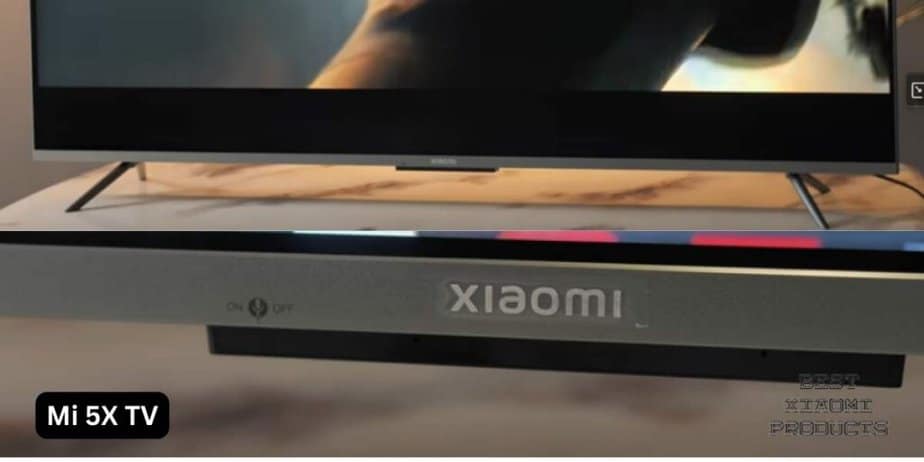
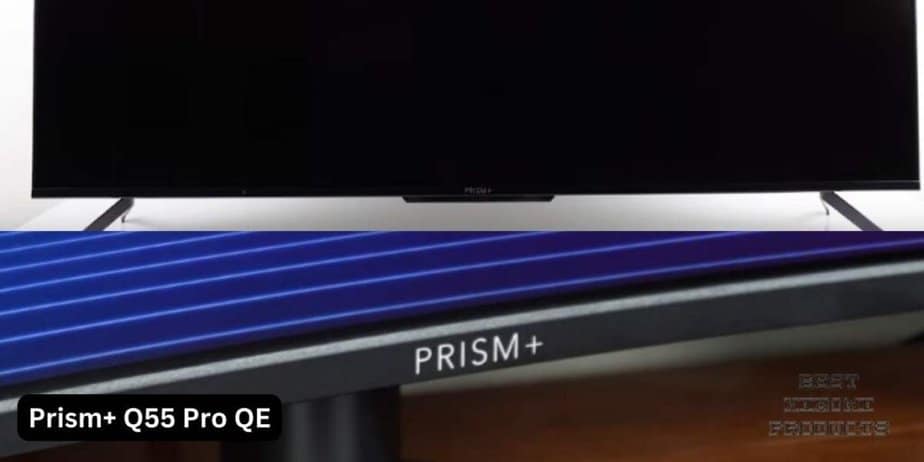
Mi 5X TV vs Prism+ Q55 Pro QE : Ease of Use
Both TVs run on Android operating systems, with the Xiaomi Mi 5X running on Android TV 10 and the Prism+ Q55 Pro QE also running on Android TV 10. Both TVs have access to the Google Play Store, and the Xiaomi Mi 5X also supports screen mirroring. Both TVs also come with a remote control, with the Xiaomi Mi 5X's remote featuring voice control.


Mi 5X TV vs Prism+ Q55 Pro QE : Connection Ports
Both TVs have three HDMI ports and two USB ports. However, the Xiaomi Mi 5X has a headphone jack and a digital audio output, while the Prism+ Q55 Pro QE has AV in and SPDIF out (optical audio out) ports.
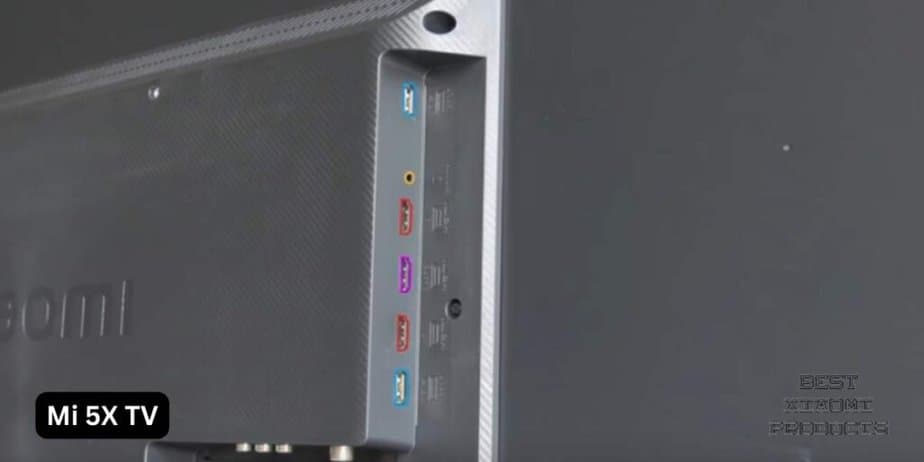
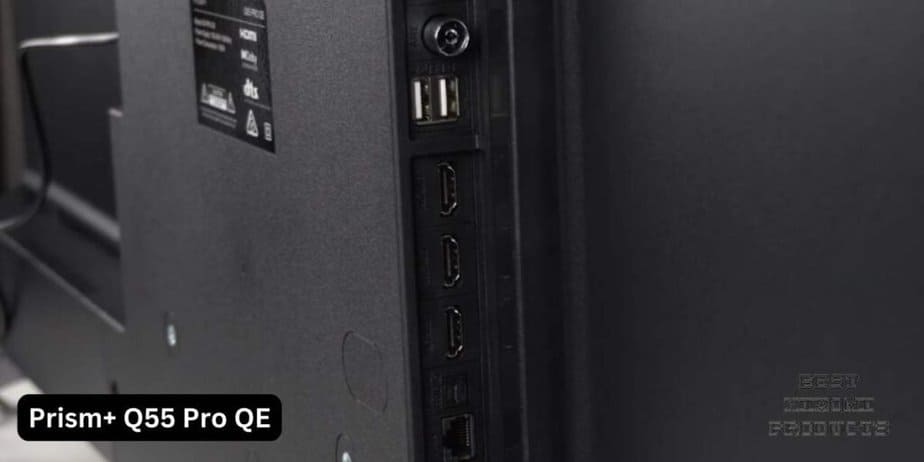
Mi 5X TV vs Prism+ Q55 Pro QE : Which is Better?
Overall, both the Xiaomi Mi 5X and Prism+ Q55 Pro QE are high-quality 4K TVs with similar features and specifications.
However, the Xiaomi Mi 5X has a slightly better display with support for more HDR formats, while the Prism+ Q55 Pro QE has a more energy-efficient rating and supports more apps, including Disney+ and Spotify.
Ultimately, the choice between these two TVs may come down to personal preferences and budget.
Xiaomi Mi TV 4S vs Prism+ E55 TV
Specifications
| Xiaomi Mi TV 4S | Prism+ E55 TV | |
| Display size | 55-inch | 55-inch |
| Display resolution | 3840x2160p | 3840x2160p |
| HDR support | Yes | Yes |
| OS | Android TV | Linux |
| UI | Patchwall OS | Custom UI |
| HDMI ports | 3 | 3 |
| HDMI ARC support | Yes | Yes |
| USB Ports | 3 | 2 |
| Wi-Fi | Yes, 2.4GHz | Yes, 2.4GHz |
| Netflix Support | Yes | Yes |
| Prime Videos Support | Yes | Yes |
| CPU | ARM Cortex A53 Quad-core CPU | Custom Quad Core |
| RAM | 2 GB | 2 GB |
| Storage | 8 GB | 8 GB |
| Voice-enabled remote control | Yes | No |
| Bluetooth | Yes, 4.2 | Yes, 4.2 |
| Audio output | 20W | 16W |
Design and Build
The design of TVs has been evolving, with thinner bezels and metal builds employed by most premium TVs. TVs that are aimed to be affordable often include thick bezels and plastic builds to reduce the costs of production.
Xiaomi uses an all-metal build for the 4S which looks and feels very premium, as though it costs much higher. Prism+ on the other hand has opted for a plastic build and a glossy one too which is a bummer as it is a fingerprint/dust magnet. But I don’t think any sane person would look at the back of a TV and care about it. A metal build is nice to have and you can maybe gloat to your friends about it. I don’t mind a plastic enclosure as long as the picture is amazing.
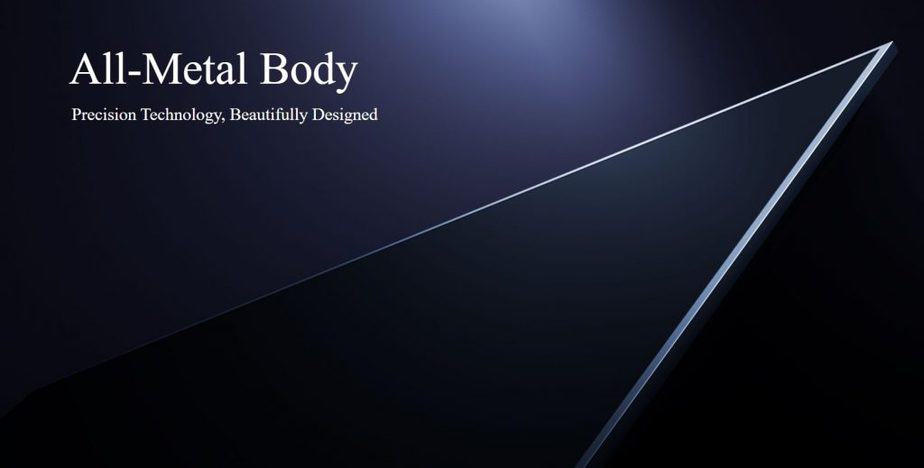
Xiaomi Metal Design
Both, the Xiaomi 4S and Prism+ E55 use a bezel-less design, which means that they have very thin bezels, which is great. I don’t like the marketing, saying bezel-less or zero-bezel design, while actually having bezels. The thickness of the bezels on these TVs is on par with higher-end TVs from Samsung, Sony, etc.
Prism Bezel-Less Design

Both TVs offer very little obstruction thanks to the thin bezels but warning, don’t fall for the marketing, it’s not bezel-less but actually thin bezels.
All things considered, Xiaomi gets the win here with a more premium design and build, and I would choose the Xiaomi 4S for design if both come in at the same price. But from the front, both TVs look identical which is more important.
Picture Quality
Picture quality should be the most important factor when deciding to buy a TV. A TV is a device that needs to display pictures/video making picture quality the most important factor. The technological advances over the past few years in terms of panel technology have made even low-end TVs look very good. It is hard to find a TV with bad picture quality now, but there are still differences between each TV, making customers sway from one TV to another.
Right off the bat, I am amazed at how both Xiaomi and Prism+ have managed to get these excellent large panels for such low prices. Both the Xiaomi 4S and Prism+ E55 come with 55-inch 4K LED panels with HDR support too. They are both bright, and vivid and offer excellent contrast for the price. Both are IPS panels too, offering excellent viewing angles, so you can look from almost any angle without any distortion to the picture or color.


When you look at both TVs separately you will find that both look great and you could go wrong with either. But there are some advantages and disadvantages they hold over each other. For example, the Mi TV 4S can go up to 500 nits of peak brightness, while the Prism+ E55 can only reach 400 nits of peak brightness. This means that the Mi 4S will be better for HDR content and offer better visibility in bright rooms.

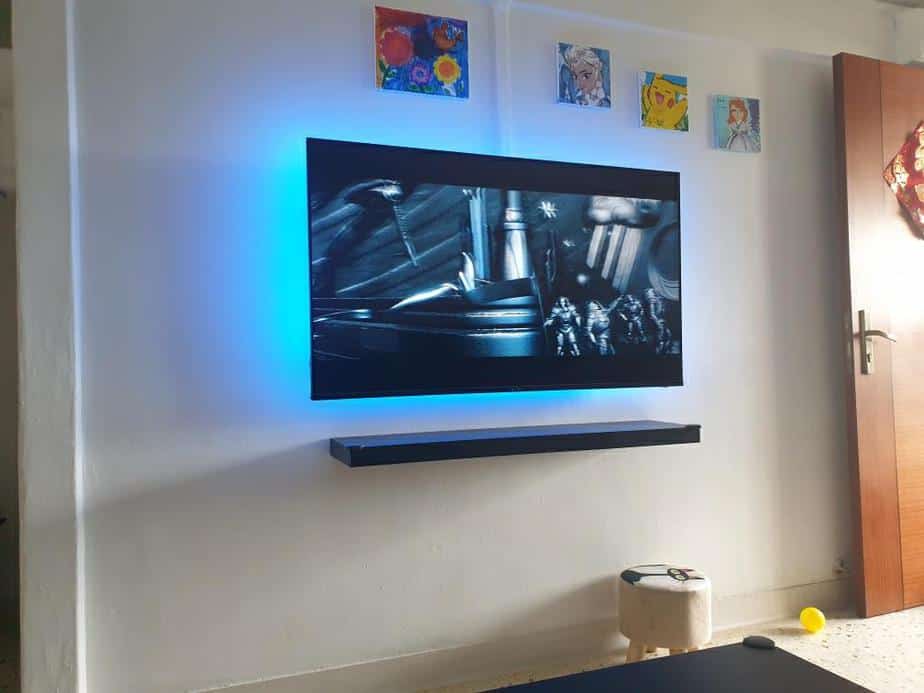
Mi TV 4S (left), Prism+ (right)
Both TVs are 10-bit with support for up to 10 billion colors but the Prism+ E55 actually has a higher contrast ratio giving it an edge over the Mi 4S. Higher contrast means deeper blacks and brighter colors, making pictures look more colorful. But you will be hard-pressed to find the difference in most situations when it comes to picture quality between the two.


Mi TV 4S (left), Prism+ (right)
I would say it is a draw here as the TVs are so evenly matched with very few advantages and disadvantages for both. You will love the picture quality on both the TVs and you won’t be disappointed with either.
If you want the Xiaomi TV experience
Check it out here on Aliexpress
Check it out here on Lazada SG
Sound
One area where TVs have actually regressed in innovation is when it comes to sound quality. It is not because they want to include bad speakers but a lack of space, location, and cost-saving measures for manufacturers.
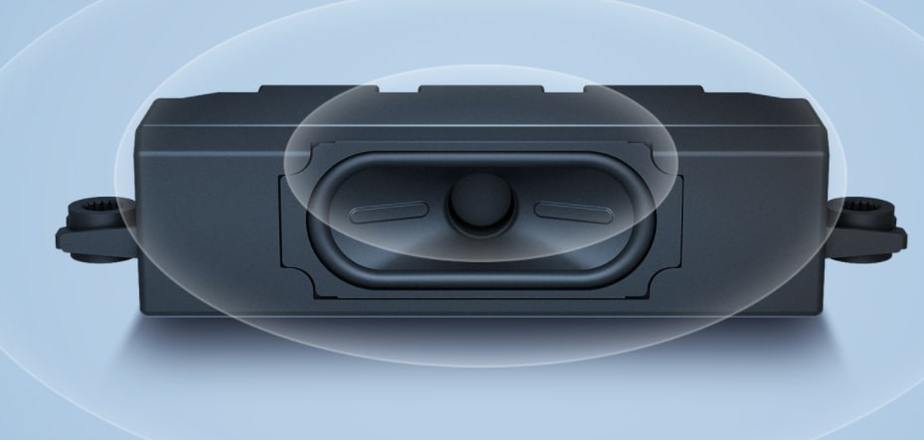
As TVs have gotten slim and sleek, there is not much space to include large speaker drivers with subwoofers to make them sound good. The picture quality has also gotten much better driving up the costs for even low-end TVs and this means manufacturers tend to include subpar speakers as a measure to save costs.
Buying any new TV thinking that you will get blown away by the sound cause of excessive marketing from the manufacturers is dumb. TV speakers come with mediocre sound quality regardless of the price or marketing. This applies to both the Xiaomi Mi 4S and the Prism+ E55.
Mi 4S Speakers
The Mi 4S comes with a 20W dual speaker system and the E55 comes with a 16W dual speaker system. Both sound clear and loud, and both can cover a medium-sized room easily. But the lack of space and bottom-firing configuration makes them sound weak when it comes to low frequencies aka bass response. There is no space for air to move around so they almost completely lack bass. The speakers on both TVs will be suited for news, documentaries, and stuff, but if you want to enjoy music or movies, you will need to invest in soundbars or home theatres.
E55 Speakers
Even my old CRT TV sounds better than the speakers on most new TVs, the same goes for the 4S and E55. I would recommend you invest even in a basic budget soundbar, which will elevate your TV's sound to the next level. And a subwoofer is a must if you want to really enjoy a cinematic experience from your TV. Along with picture quality, sound is important for watching movies, music videos, and more. Using the inbuilt speakers of new TVs is doing a disservice to the picture quality, and you are missing out on the full experience.

Sound is another area TV manufacturers tend to boast about a lot with nothing to offer in real life. They are fine speakers, but nothing as amazing as they are marketed to be though.
Features
Both the Mi 4S and E55 come with features that make that more than just video-playing devices. They are smart TVs with a lot of extra functionality. They can run apps for streaming services like Netflix, Amazon Prime, YouTube, and more. These are Smart TVs with the ability to run games and other android apps too.
Xiaomi Mi 4S has the edge here though, it has a much better UI and support for more apps compared to the Prism+ E55. Mi 4S also runs android OS compared to Linux on the Prism+ E55. Android is a much more mature OS for TVs and it runs very well too.
The Mi 4S has a remote that has a mic with which you can summon Google Assistant. This makes browsing and searching through the TV a breeze. Both TVs have the ability to cast from your smartphone or computer, though the E55 is limited to Android and Windows devices only.


Port selection can sometimes make or break a purchase, as you would want compatibility with all devices. Both the Mi 4S and the Prism+ E55 do well here offering a plethora of ports. You get 3 HDMI ports and 2 USB 2.0 ports. 1 AV, 1 VGA, 1 Coaxial, 1 RF, and 1 Ethernet on both TVs. Xiaomi offers 1 extra USB port.
Overall when comparing the extra Smart TV features, Xiaomi is the clear winner here, thanks to using an Android-based OS and support for a huge library of apps and games to choose from. If you are looking to more than just stream from popular apps, then the Mi 4S is the clear winner here. The E55 is decent in its smart functions offering but still falls short of the Mi 4S.
Xiaomi vs Prism+ Conclusion
If given a choice between the Mi TV 4S and the Prism+ E55 for the same price, I would choose the Mi TV 4S, because it offers a much better user experience thanks to the Android-based TV OS. The Prism+ E55 matches the Mi TV 4S in pretty much every other category.
The Mi TV 4S just edges out the E55 when taking all factors into account. If they are similarly priced, go for the Mi TV 4S, but I would choose the one that is priced lower in general. At the time of writing the Mi TV 4S is cheaper making it a no-brainer.
Xiaomi vs Prism+ FAQs
What panel does Prism TV use?
Where is Prism TV from?
Is Xiaomi or Prism TV better?
Is Prism TV really good?
What is so good about Prism TV?
Is Prism under Sony?
Who is the manufacturer of Prism TV?
Also Read:
